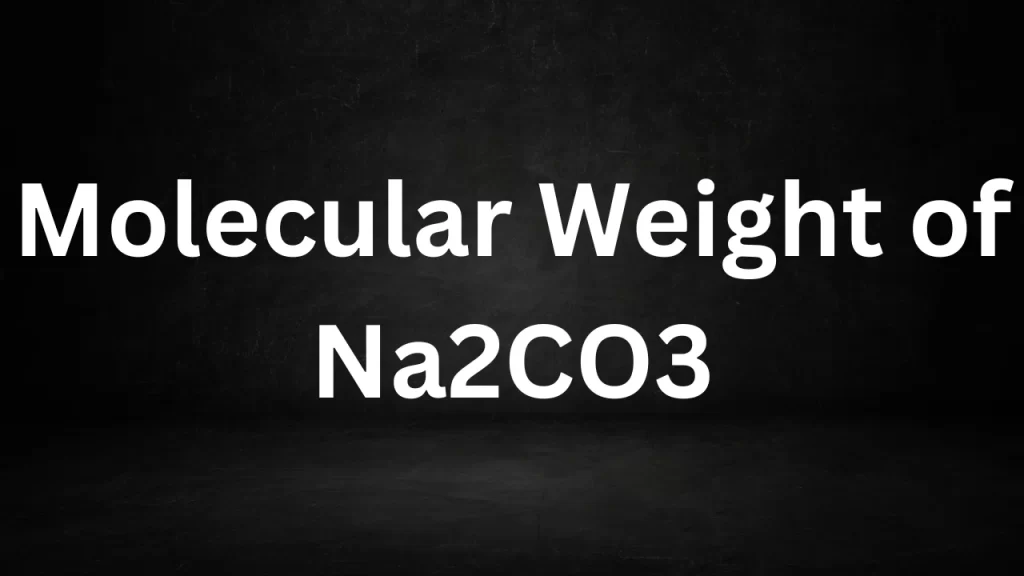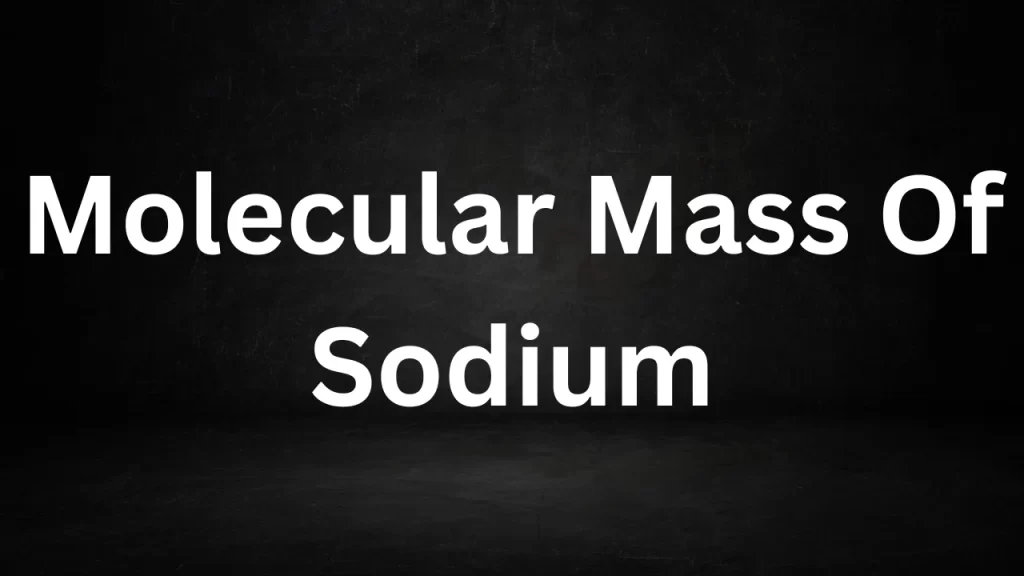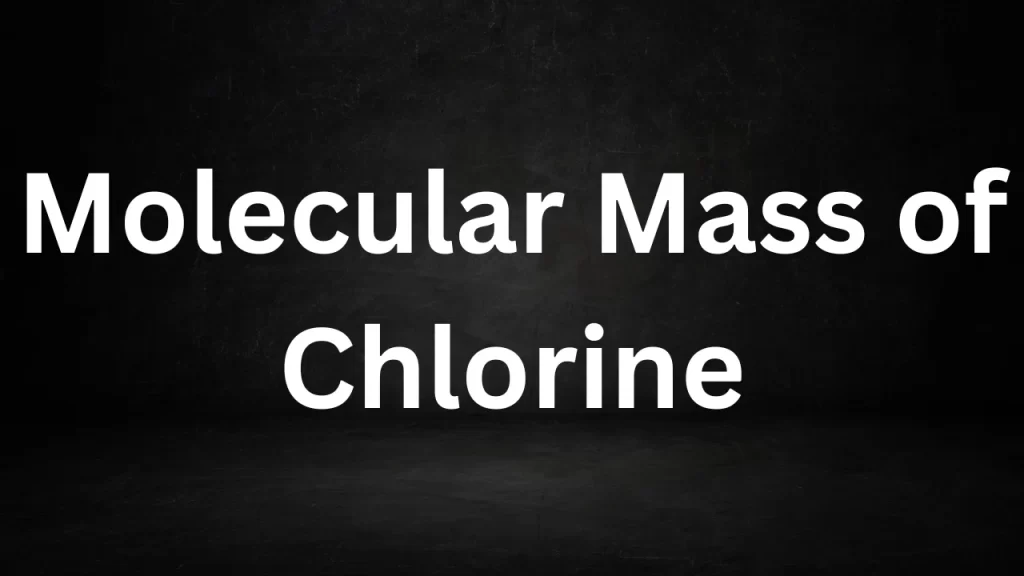Blog
Molecular Weight Of SO2
Molecular Weight Of SO2: Sulfur dioxide, with the chemical formula SO2, is a compound of great importance in various fields, including environmental science, chemistry, and industry.
It is a gas with a distinctive, pungent odor and is produced both naturally and through human activities. In this article, we will delve into the molecular weight of sulfur dioxide, its significance, and its various applications.

Molecular Weight Of SO2
Decoding the Composition of Sulfur Dioxide (SO2)
To understand the molecular weight of sulfur dioxide (SO2), let’s examine its atomic composition:
- Sulfur (S): Sulfur has an atomic mass of approximately 32.07 atomic mass units (amu).
- Oxygen (O): Oxygen has an atomic mass of approximately 16.00 amu.
- Sulfur dioxide (SO2) consists of one sulfur atom (S) and two oxygen atoms (O).
Calculating the Molecular Weight of SO2
To calculate the mole weight of sulfur dioxide (SO2), we sum the atomic masses of its constituent atoms according to the chemical formula:
Molecular Weight of SO2 = Atomic Mass of S + (2 × Atomic Mass of O)
Molecular Weight of SO2 = 32.07 amu + (2 × 16.00 amu)
The Molecular Weight of SO2 = 32.07 amu + 32.00 amu
Molecular Weight of SO2 ≈ 64.07 amu
Therefore, the molecular weight of sulfur dioxide (SO2) is approximately 64.07 atomic mass units (amu) or 64.07 grams per mole (g/mol).
Significance of Molecular Weight in Sulfur Dioxide
The molecular weight of sulfur dioxide holds significant importance in various scientific and practical applications:
- Environmental Monitoring: Sulfur dioxide is a common air pollutant produced by combustion processes, particularly in industrial settings. Monitoring its levels in the atmosphere is crucial for assessing air quality and environmental impact.
- Chemical Reactions: Sulfur dioxide participates in various chemical reactions, including those in the atmosphere (e.g., in acid rain formation) and industrial processes (e.g., in the production of sulfuric acid). Understanding its molecular weight aids in stoichiometry and reaction calculations.
- Preservation: Sulfur dioxide is used as a preservative in the food and beverage industry to prevent spoilage and oxidation. Knowledge of its molecular weight is essential for accurate dosing.
- Analytical Chemistry: Sulfur dioxide can be employed in analytical chemistry as a reducing agent and reagent in chemical tests. Precise molecular weight values are vital for analytical procedures.
- Environmental Remediation: In environmental science and engineering, sulfur dioxide can be employed for the removal of pollutants such as nitric oxide (NO) from gas streams. Its molecular weight is essential for designing and optimizing these processes.
Conclusion
The mole weight of sulfur dioxide (SO2), approximately 64.07 amu or 64.07 g/mol, plays a crucial role in numerous scientific and practical applications. Whether it’s assessing air quality, conducting chemical reactions, preserving food, or analyzing environmental processes, understanding the mole weight of SO2 is fundamental for achieving desired outcomes and addressing environmental and industrial challenges. This versatile compound continues to be a key player in various fields, underscoring the importance of accurate molecular weight knowledge.
Read More
- Molecular Weight of Na2CO3
- Molecular Mass Of Sodium
- Molecular Mass of Sucrose
- Molecular Mass of Chlorine
- Molar Mass Of C2H5OH
Frequently Asked Questions (FAQs) Molecular Weight Of SO2
What is the molecular weight of sulfur dioxide (SO2)?
The molecular weight of sulfur dioxide (SO2) is approximately 64.07 atomic mass units (amu) or 64.07 grams per mole (g/mol). This value is calculated based on the atomic masses of sulfur (S) and oxygen (O) in the chemical formula.
What is sulfur dioxide (SO2) used for?
Sulfur dioxide is used in various applications, including as an air pollutant monitor, a preservative in the food and beverage industry, a reducing agent in chemical reactions, and in environmental remediation processes.
Why is it important to know the molecular weight of SO2?
Knowing the molecular weight of sulfur dioxide is important for stoichiometry in chemical reactions, environmental monitoring, dosing in food preservation, and analytical chemistry procedures. It provides essential information for accurate calculations and assessments in these fields.
Is sulfur dioxide a natural or human-made compound?
Sulfur dioxide can be both natural and human-made. It occurs naturally as a result of volcanic eruptions and is also generated as a byproduct of specific biological processes.. However, a significant amount of sulfur dioxide in the atmosphere results from human activities, such as the burning of fossil fuels.
How does sulfur dioxide contribute to environmental pollution?
Sulfur dioxide is a major contributor to air pollution, particularly in industrial areas. It can lead to the formation of acid rain, which has harmful effects on the environment, including damage to vegetation and aquatic ecosystems.
Molecular Weight of Na2CO3
Molecular Weight of Na2CO3: Sodium carbonate, with the chemical formula Na2CO3, is a compound commonly known as soda ash or washing soda.
It plays a significant role in various industrial processes and applications, including glass production, detergent manufacturing, and water treatment.
Understanding the molecular weight of Na2CO3 is essential for both theoretical and practical purposes. In this article, we will explore the molecular weight of sodium carbonate and its significance in chemistry and industry.

Molecular Weight of Na2CO3
The Composition of Sodium Carbonate (Na2CO3)
Before diving into the molecular weight of sodium carbonate, let’s break down its chemical composition:
- Sodium (Na): Sodium has an atomic mass of approximately 22.99 atomic mass units (amu).
- Carbon (C): Carbon has an atomic mass of approximately 12.01 amu.
- Oxygen (O): Oxygen has an atomic mass of approximately 16.00 amu.
- Sodium carbonate (Na2CO3) consists of two sodium atoms (Na), one carbon atom (C), and three oxygen atoms (O).
Calculating the Molecular Weight of Na2CO3
To find the molecular weight of sodium carbonate (Na2CO3), we sum the atomic masses of its constituent atoms according to the chemical formula:
Molecular Weight of Na2CO3 = (2 × Atomic Mass of Na) + Atomic Mass of C + (3 × Atomic Mass of O)
The Molecular Weight of Na2CO3 = (2 × 22.99 amu) + 12.01 amu + (3 × 16.00 amu)
Molecular Weight of Na2CO3 = 45.98 amu + 12.01 amu + 48.00 amu
Molecular Weight of Na2CO3 ≈ 105.99 amu
So, the mol weight of sodium carbonate (Na2CO3) is approximately 105.99 atomic mass units (amu) or 105.99 grams per mole (g/mol).
Significance of Molecular Weight in Sodium Carbonate
The mole weight of sodium carbonate is crucial for several reasons:
- Stoichiometry: In chemical reactions involving sodium carbonate, its molecular weight is used to calculate the amounts of reactants and products. This is essential for balancing chemical equations and determining reaction yields.
- Dosing in Water Treatment: Sodium carbonate is used in water treatment to adjust pH levels and soften water. Knowledge of its molecular weight helps in dosing calculations to achieve the desired treatment results.
- Manufacturing Processes: Industries such as glass manufacturing and detergent production rely on sodium carbonate as a key ingredient. Accurate molecular weight values are vital for quality control and formulation.
- Analytical Chemistry: In analytical chemistry, sodium carbonate can be used as a standard for titrations. Precise molecular weight values are essential for accurate analytical procedures.
Conclusion
The mole weight of sodium carbonate (Na2CO3), approximately 105.99 amu or 105.99 g/mol, is a fundamental property that underlies its various applications in chemistry and industry. Whether used as a reactant in chemical processes, a water treatment agent, or an essential component in manufacturing, understanding the molecular weight of sodium carbonate is essential for ensuring the efficiency and effectiveness of these processes. This versatile compound continues to be a vital player in numerous industrial and scientific endeavors.
Read More
- Molecular Mass Of Sodium
- Molecular Mass of Sucrose
- Molecular Mass of Chlorine
- Molar Mass Of C2H5OH
- Molecular Weight of Co2
Frequently Asked Questions (FAQs) Molecular Weight of Na2CO3
What is the mole weight of Na2CO3?
The mole weight of sodium carbonate (Na2CO3) is approximately 105.99 atomic mass units (amu) or 105.99 grams per mole (g/mol). It is calculated by adding the atomic masses of its constituent atoms according to the chemical formula.
Why is it important to know the molecular weight of Na2CO3?
Knowing the molecular weight of sodium carbonate is crucial for various reasons, including stoichiometry in chemical reactions, dosing in water treatment, formulation in manufacturing processes, and analytical chemistry procedures.
What are some common uses of sodium carbonate (Na2CO3)?
Sodium carbonate, also known as soda ash or washing soda, is used in a wide range of applications. It is used in glass production, detergent manufacturing, water treatment for pH adjustment, and as a cleaning agent in household and industrial settings.
How is the mole weight of Na2CO3 calculated?
The mole weight of Na2CO3 is calculated by summing the atomic masses of its constituent atoms. In the case of sodium carbonate, you add the atomic masses of two sodium (Na) atoms, one carbon (C) atom, and three oxygen (O) atoms.
Can sodium carbonate be used in food or as a food additive?
Yes, sodium carbonate is used in the food industry as a food additive with the code E500. It is used in some food products, including baked goods, as a leavening agent to help dough rise.
Molecular Mass Of Sodium
Molecular Mass Of Sodium: Sodium, with the chemical symbol “Na” derived from the Latin word “natrium,” is a chemical element that plays a crucial role in various aspects of our daily lives.
Understanding the molecular mass of sodium is fundamental in chemistry, as it helps scientists and researchers predict how sodium interacts with other elements and compounds. In this article, we will delve into the molecular mass of sodium, its significance, and its applications.

Molecular Mass Of Sodium
The Atomic Structure of Sodium
To comprehend the molecular mass of sodium, it is important to first explore its atomic structure:
- Atomic Number: Sodium is identified by its atomic number, which is 11. This signifies that a sodium atom contains 11 protons in its nucleus.
- Electron Configuration: Sodium has an electron configuration of 2-8-1, meaning it has two electrons in its first energy level, eight in its second energy level, and one in its third energy level.
- Isotopes: Sodium has several isotopes, but the most abundant and stable isotope is sodium-23 (Na-23), which has 12 neutrons in addition to its 11 protons.
Molar Mass vs. Molecular Mass
It is essential to differentiate between molar mass and molecular mass. Molar mass refers to the mass of one mole of a substance, often expressed in grams per mole (g/mol). Molecular mass (or molecular weight) typically refers to the mass of a molecule, which consists of two or more atoms chemically bonded together. Sodium, as an element, does not form diatomic molecules like hydrogen (H2) or oxygen (O2), so its molecular mass is the same as its atomic mass.
Calculating the Molecular Mass of Sodium (Na)
To calculate the molecular mass of sodium, we can use the atomic mass of sodium-23 (Na-23):
- The atomic mass of sodium-23 is approximately 22.99 atomic mass units (amu) or 22.99 g/mol.
- Therefore, the molecular mass of sodium (Na) is approximately 22.99 g/mol or 22.99 amu.
Significance of Molecular Mass in Sodium
The molecular mass of sodium is a crucial parameter with significant implications in various fields:
- Chemical Reactions: Sodium readily forms compounds with other elements, such as chlorine (NaCl) or oxygen (Na2O). The molecular mass of sodium is essential for stoichiometry, helping determine the amounts of reactants and products in chemical reactions.
- Biological Processes: Sodium ions (Na+) are vital in biology, playing a key role in nerve impulse transmission, muscle contraction, and maintaining electrolyte balance in the human body.
- Metallurgy: Sodium is used in the extraction of certain metals, such as titanium and zirconium, from their ores. Its molecular mass is relevant in metallurgical processes.
- Alloys: Sodium can be incorporated into alloys, such as sodium-potassium alloy, which has applications in heat transfer and cooling systems.
- Nuclear Reactors: In certain nuclear reactors employing liquid metal cooling systems, sodium serves as a coolant. The mole mass of sodium is important in the design and operation of such reactors.
Conclusion
Sodium, with a mole mass of approximately 22.99 g/mol or 22.99 amu, is a fundamental element in chemistry and biology. Its molecular mass is a crucial parameter in various chemical reactions, biological processes, and industrial applications. Sodium’s role in our daily lives extends from table salt (sodium chloride) to essential bodily functions, illustrating the significance of understanding its molecular mass and its behavior in various contexts.
Read More
- Molecular Mass of Sucrose
- Molecular Mass of Chlorine
- Molar Mass Of C2H5OH
- Molecular Weight of Co2
- Molecular Mass of Water
Frequently Asked Questions (FAQs) mole Mass Of Sodium
What is the mole mass of sodium?
The mole mass of sodium (Na) is approximately 22.99 grams per mole (g/mol) or 22.99 atomic mass units (amu). It represents the mass of one mole of sodium atoms.
How is the mole mass of sodium calculated?
The mole mass of sodium is calculated using the atomic mass of its most abundant and stable isotope, sodium-23 (Na-23), which has an atomic mass of approximately 22.99 amu or 22.99 g/mol.
What is the significance of knowing the mole mass of sodium?
Knowing the mole mass of sodium is important in various fields, including chemistry, biology, and industry. It is crucial for stoichiometry in chemical reactions, understanding the behavior of sodium compounds, and its role in biological processes such as nerve signaling and muscle contraction.
What are some common compounds of sodium?
Sodium forms numerous compounds, including sodium chloride (table salt, NaCl), sodium hydroxide (caustic soda, NaOH), sodium carbonate (soda ash, Na2CO3), and sodium bicarbonate (baking soda, NaHCO3), among others. These compounds have various industrial, culinary, and chemical applications.
Why is sodium important in biological processes?
Sodium ions (Na+) are essential in biological processes such as nerve impulse transmission, muscle contraction, and the maintenance of electrolyte balance in the human body. Sodium channels in cell membranes allow for the passage of sodium ions, facilitating electrical signaling.
Simple Harmonic Motion Examples
Simple Harmonic Motion Examples: Simple Harmonic Motion (SHM) is a fundamental concept in physics that describes the repetitive, oscillatory motion of an object around an equilibrium position.
It is a common phenomenon in various natural and artificial systems. In this article, we will explore some examples of simple harmonic motion to better understand this important concept and its real-world applications.

Simple Harmonic Motion Examples
1. Pendulum Motion
One of the most classic examples of simple harmonic motion is the motion of a pendulum. A pendulum consists of a mass (known as the bob) attached to a string or rod of fixed length. When the bob is displaced from its equilibrium position and released, it swings back and forth in a regular, repeating pattern. The motion of the pendulum is SHM as long as the angle of displacement is small.
2. Mass-Spring Systems
Another common example of SHM is a mass-spring system. This system consists of a mass (M) attached to a spring with a spring constant (k). When the mass is displaced from its equilibrium position and then released, it oscillates back and forth around the equilibrium point. The motion of the mass in a mass-spring system is SHM, and the frequency of oscillation depends on the mass and the spring constant.
3. Vibrating Guitar String
When a guitar string is plucked or strummed, it vibrates back and forth to produce sound. The motion of the vibrating guitar string is a classic example of simple harmonic motion. The pitch of the sound is determined by the frequency of the string’s vibration, which can be adjusted by changing the tension in the string or altering its length.
4. Simple Pendulum Clocks
Historically, many clocks used a simple pendulum as the timekeeping mechanism. The oscillation of the pendulum created a regular and accurate timing reference. Although modern clocks often use electronic oscillators, the principle of simple harmonic motion in pendulums remains an important part of the history of timekeeping.
5. Vibrations in Car Suspensions
Car suspensions use springs and shock absorbers to provide a smooth ride by absorbing road bumps and vibrations. When a car encounters a rough road, the springs in the suspension system undergo simple harmonic motion as they compress and expand to absorb the shock. This motion helps improve ride comfort.
6. Molecular Vibrations
In the realm of molecular chemistry, simple harmonic motion can be observed in molecular vibrations. Molecules consist of atoms connected by chemical bonds, and these bonds act like springs. When a molecule absorbs energy, it undergoes vibrational motion, which can be described using SHM principles. Molecular vibrations play a crucial role in various chemical processes, including infrared spectroscopy.
7. Electrical Oscillations in Circuits
Electrical circuits containing components like capacitors and inductors can exhibit simple harmonic motion when an electrical charge or current oscillates back and forth. Oscillations in electrical circuits are fundamental in various electronic devices, such as radios, oscillators, and antennas.
Conclusion
Simple Harmonic Motion (SHM) is a pervasive concept in the physical world, and these examples illustrate its presence in various systems and phenomena. Understanding SHM is crucial in physics and engineering. It allows scientists and engineers to analyze and design systems that involve oscillatory behavior. Whether it’s the swinging of a pendulum, the vibrations in a guitar string, or the oscillations in electronic circuits, SHM provides valuable insights into the dynamics of countless systems in our everyday lives.
Read More
- Molecular Mass Of Calcium
- Molecular Weight of Chlorine
- Molecular Weight Of Benzene
- Lumen Meaning In Biology
- Molecular Weight Of Sucrose
Frequently Asked Questions (FAQs) Simple Harmonic Motion Examples
What is Simple Harmonic Motion (SHM)?
Simple Harmonic Motion is a type of periodic motion in which an object oscillates back and forth around an equilibrium position. The motion is characterized by a sinusoidal (sine or cosine) pattern. It occurs when a restoring force is proportional to the displacement from the equilibrium.
Why is SHM important in physics and engineering?
SHM is essential because it provides a fundamental understanding of oscillatory behavior. which is prevalent in various natural and artificial systems. It is a key concept in physics and engineering, allowing scientists and engineers to analyze and design systems involving periodic motion.
What are some everyday examples of SHM?
Everyday examples of SHM include pendulum motion (e.g., a swinging pendulum or a grandfather clock), mass-spring systems, vibrations in guitar strings, car suspensions, and electrical oscillations in circuits.
How does a pendulum exhibit SHM?
A pendulum exhibits SHM when a mass (bob) is suspended from a fixed point and allowed to swing freely. The restoring force is provided by gravity. the motion follows a sinusoidal pattern as the pendulum oscillates back and forth.
What determines the frequency of oscillation in SHM?
The frequency of oscillation in SHM is determined by factors such as the mass of the object, the spring constant (in mass-spring systems), or the length of the pendulum. It is a measure of how many cycles (complete oscillations) occur per unit of time.
Equivalent Weight of KMnO4
Equivalent Weight of KMnO4: Potassium permanganate, with the chemical formula KMnO4, is a powerful and versatile oxidizing agent commonly used in chemistry, medicine, and water treatment.
One of the key concepts related to potassium permanganate is its equivalent weight. In this article, we will explore the equivalent weight of KMnO4 and its significance in redox (reduction-oxidation) reactions.

Equivalent Weight of KMnO4
Understanding Equivalent Weight
Equivalent weight is a concept in chemistry that represents the mass of a substance (in this case, KMnO4) that can either gain or lose one mole of electrons during a chemical reaction.Put more simply, it informs us about the quantity of a substance required to either react with or substitute a specific quantity of electrons. Equivalent weight is particularly useful in redox reactions.
Atomic Composition of KMnO4
Before we calculate the equivalent weight of KMnO4, let’s understand its atomic composition:
- Potassium (K) has an atomic mass of approximately 39.10 grams per mole (g/mol).
- Manganese (Mn) has an atomic mass of approximately 54.94 g/mol.
- Oxygen (O) has an atomic mass of approximately 16.00 g/mol.
The molecular formula of potassium permanganate is KMnO4, which means it consists of one potassium atom (K), one manganese atom (Mn), and four oxygen atoms (O).
Calculating the Equivalent Weight of KMnO4
To calculate the equivalent weight of KMnO4, we need to determine how many moles of electrons one mole of KMnO4 can gain or lose during a redox reaction.
In a redox reaction, potassium permanganate (KMnO4) can undergo changes in its oxidation state. Specifically, manganese (Mn) can change from an oxidation state of +7 to +2 or lower. The quantity of electrons engaged in this transformation can be determined by subtracting the initial oxidation state (+2) from the final one (7), resulting in a total of 9 electrons.
Now, to find the equivalent weight, we divide the molar mass of KMnO4 by the number of electrons involved:
equ Weight of KMnO4 = Molar Mass of KMnO4 / Number of Electrons
equ Weight of KMnO4 = (39.10 g/mol + 54.94 g/mol + 4 × 16.00 g/mol) / 9 electrons
Equivalent Weight of KMnO4 ≈ 158.04 g/eq
Therefore, the equ weight of KMnO4 is approximately 158.04 grams per equivalent (g/eq).
Significance of equ Weight in Redox Reactions
The equ weight of KMnO4 is a critical parameter in redox reactions. It helps determine the quantity of KMnO4 required to react with a given amount of reducing agent or to oxidize a specific substance. In practical applications, chemists use equivalent weight calculations to balance redox equations and ensure that reactions proceed accurately.
Conclusion
The equ weight of KMnO4, approximately 158.04 grams per equivalent (g/eq), is a fundamental concept in redox chemistry. It defines the mass of KMnO4 that can either gain or lose one mole of electrons during a chemical reaction. Understanding the equivalent weight of KMnO4 is essential for accurately designing and conducting redox reactions in various fields, including analytical chemistry, environmental science, and industrial processes.
Read More
- Molecular Mass of Na
- Chemical Properties of Acid
- Molar Mass of Benzene
- Molar Mass of Calcium
- Electromagnetic Spectrum X Rays
Frequently Asked Questions (FAQs) equ Weight of KMnO4
What is the equ weight of KMnO4?
The equ weight of KMnO4 (potassium permanganate) is approximately 158.04 grams per equivalent (g/eq). It represents the mass of KMnO4 that can either gain or lose one mole of electrons during a redox (reduction-oxidation) reaction.
Why is equ weight important in redox reactions involving KMnO4?
Equ weight is a crucial concept in redox chemistry. It helps determine the quantity of KMnO4 needed to react with a specific amount of a reducing agent or to oxidize a particular substance accurately. It is essential for balancing redox equations and ensuring the proper stoichiometry of reactions.
How is the equ weight of KMnO4 calculated?
The equivalent weight of KMnO4 is determined by dividing its molar mass by the number of electrons participating in the redox alteration. In the case of KMnO4, the redox change typically involves manganese (Mn) changing from an oxidation state of +7 to +2 or lower, which corresponds to nine electrons.
What are some common applications of KMnO4 in chemistry?
KMnO4 is extensively employed as a powerful oxidizing agent in diverse chemical reactions. It used in titrations for determining the concentration of reducing agents, organic synthesis, and water treatment. It is also used as a disinfectant and stain remover.
Can you provide an example of how to use the equ weight of KMnO4 in a redox reaction?
Sure! Let’s say you have a redox reaction where you want to oxidize iron(II) ions (Fe²⁺) to iron(III) ions (Fe³⁺) using KMnO4. You would use the equ weight of KMnO4 to calculate the amount of KMnO4 required to oxidize a given amount of Fe²⁺. This calculation ensures that the reaction proceeds with the correct stoichiometry.
Molecular Mass of Na
Molecular Mass of Na: Sodium, with its symbol “Na” derived from the Latin word “natrium,” is a highly reactive chemical element found in group 1 (or Group IA) of the periodic table.
This metal is well-known for its importance in various biological processes and industrial applications. To understand the properties and utility of sodium, it’s essential to explore its molecular mass, also referred to as atomic weight.
In this article, we will delve into the molecular mass of sodium and its significance in both scientific research and practical applications.

Molecular Mass of Na
The Atomic Structure of Sodium
Before delving into the molecular mass of sodium, it’s crucial to understand its atomic structure. Sodium, with the atomic number 11, contains 11 electrons in various energy levels or shells surrounding its nucleus. Its atomic mass is approximately 22.99 atomic mass units (amu). Sodium has only one stable isotope, sodium-23 (Na-23), which accounts for its average atomic mass.
Molecular Mass vs. Atomic Mass
To avoid confusion, it’s important to differentiate between atomic mass and molecular mass. Atomic mass refers to the mass of a single atom of an element, while molecular mass (or molecular weight) is the mass of a molecule, which consists of two or more atoms. In the case of sodium, it typically exists as individual sodium atoms (Na) rather than diatomic molecules.5
Calculating the Molecular Mass of Sodium (Na)
To determine the molecular mass of sodium, we consider the atomic mass of a single sodium atom:
- The atomic mass of sodium (Na) is approximately 22.99 atomic mass units (amu).
- Since sodium is primarily encountered as single atoms, there is no molecular mass to calculate beyond the atomic mass.
Significance of Molecular Mass in Sodium
While the concept of molecular mass is less applicable to sodium, the atomic mass of sodium is crucial for various reasons:
- Chemical Reactions: Sodium is highly reactive and readily forms compounds with other elements and compounds. Its atomic mass plays a vital role in stoichiometry, helping to determine the amounts of reactants and products in chemical reactions.
- Electrolytes in Biology: Sodium ions (Na+) are essential electrolytes in biological systems, playing a critical role in nerve function, muscle contraction, and maintaining fluid balance in the body.
- Industrial Applications: Sodium and its compounds are used in various industrial processes, including the production of chemicals, metallurgy, and as coolants in nuclear reactors.
- Salt Production: Sodium chloride (table salt) is a ubiquitous seasoning and food preservative, and the atomic mass of sodium is a key factor in determining the salt’s composition and properties.
- Energy Storage: Sodium-ion batteries, a potential alternative to lithium-ion batteries, rely on the chemistry of sodium. The atomic mass of sodium is important for designing efficient energy storage systems.
Conclusion
Sodium, a versatile and reactive element, has an atomic mass of approximately 22.99 atomic mass units (amu). While sodium primarily exists as individual atoms (Na) rather than molecules, its atomic mass is fundamental to its chemical properties and various applications. Understanding the atomic mass of sodium is essential for predicting its behavior in chemical reactions, its roles in biological systems, and its utility in industries ranging from metallurgy to energy storage. Sodium’s significance in both scientific research and practical applications underscores its importance in our modern world.
Read More
- Chemical Properties of Acid
- Molar Mass of Benzene
- Molar Mass of Calcium
- Electromagnetic Spectrum X Rays
- Electric Circuit Electrical Symbols
Frequently Asked Questions (FAQs) Molecular Mass of Na
What is the molecular mass of sodium (Na)?
Sodium, typically encountered as individual sodium atoms (Na), does not have a molecular mass in the traditional sense. Its atomic mass is approximately 22.99 atomic mass units (amu).
What is the difference between atomic mass and molecular mass?
Atomic mass refers to the mass of a single atom of an element, such as a sodium atom (Na). Molecular mass (or molecular weight) refers to the mass of a molecule, which consists of two or more atoms chemically bonded together. Sodium is primarily found as individual atoms, so its molecular mass is not typically calculated.
Why is the atomic mass of sodium important?
The atomic mass of sodium is crucial in various fields, including chemistry and biology. It plays a significant role in stoichiometry, determining the quantities of reactants and products in chemical reactions. In biology, sodium ions (Na+) are essential for various physiological processes.
Is sodium always found as single atoms (Na) in its natural state?
Sodium is a highly reactive metal and is typically found as individual sodium atoms (Na) in its natural state. It readily forms compounds with other elements and molecules due to its reactivity.
What are some common uses of sodium in industry?
Sodium and its compounds have numerous industrial applications. These include metallurgy (sodium is used as a reducing agent), chemical production (sodium compounds are used in the manufacture of various chemicals), and nuclear reactors (sodium is used as a coolant).
Molecular Mass of Sucrose
Molecular Mass of Sucrose: Sucrose, commonly known as table sugar, is one of the most familiar and widely used carbohydrates in the world. Its sweet taste makes it a favorite ingredient in many culinary creations, from desserts to beverages.
But beyond its taste, sucrose has a fascinating chemical structure with a specific molecular mass that plays a crucial role in various applications and industries. In this article, we will explore the molecular mass of sucrose and its significance in both the culinary world and scientific research.

Molecular Mass of Sucrose
The Chemical Structure of Sucrose
Sucrose is a disaccharide, which means it consists of two simpler sugar molecules chemically bonded together. Specifically, it is composed of one molecule of glucose and one molecule of fructose linked by a glycosidic bond. This unique combination of glucose and fructose is what gives sucrose its distinctive sweet taste.
The molecular formula of sucrose is C12H22O11, representing 12 carbon (C) atoms, 22 hydrogen (H) atoms, and 11 oxygen (O) atoms. The molecular mass of sucrose is calculated by summing the atomic masses of these elements in the given ratio.
Calculating the Molecular Mass of Sucrose (C12H22O11)
To determine the molecular mass of sucrose, we need to consider the atomic masses of carbon (C), hydrogen (H), and oxygen (O):
- The atomic mass of carbon (C) is approximately 12.01 atomic mass units (amu).
- The atomic mass of hydrogen (H) is approximately 1.01 amu.
- The atomic mass of oxygen (O) is approximately 16.00 amu.
Now, let’s calculate the mol mass of sucrose:
The mol Mass of Sucrose = (12 × Atomic Mass of C) + (22 × Atomic Mass of H) + (11 × Atomic Mass of O)
mol Mass of Sucrose = (12 × 12.01 amu) + (22 × 1.01 amu) + (11 × 16.00 amu)
mol Mass of Sucrose ≈ 342.30 amu
Therefore, the mol mass of sucrose is approximately 342.30 atomic mass units (amu).
Significance of mol Mass in Sucrose
he mol mass of sucrose is a fundamental parameter with significant implications in various fields:
- Culinary Science: In cooking and baking, knowing the molecular mass of sucrose is crucial for precise recipe measurements. It helps determine the sweetness level, texture, and overall quality of dishes and desserts.
- Chemical Analysis: Sucrose can be quantified in food and beverage products through various analytical techniques. Understanding its molecular mass aids in accurate concentration calculations.
- Biological Processes: In biology and nutrition, the molecular mass of sucrose is essential for understanding how it is metabolized in the human body and its impact on health.
- Chemical Reactions: Sucrose can undergo various chemical reactions, such as hydrolysis, which breaks it down into its constituent sugars, glucose, and fructose. The molecular mass is essential for stoichiometry in such reactions.
- Food Industry: The sugar content of food and beverages is often determined by measuring sucrose concentration, and its molecular mass is used to calculate nutritional information.
Conclusion
Sucrose, the sweetener found in everyday table sugar, has a mol mass of approximately 342.30 atomic mass units (amu). This molecular mass is a vital factor in the world of culinary arts, scientific research, and various industries where sucrose plays a significant role. Understanding the molecular mass of sucrose enables precise measurements, ensures the quality of food products, and contributes to our comprehension of the chemistry behind the sweet taste we all enjoy.
Read More
- Molecular Mass Of O2
- Molecular Mass of H2
- Molecular Mass Of NH3
- Molecular Mass Of Ch4
- Nitric Acid Molar Mass
Frequently Asked Questions (FAQs) mol Mass of Sucrose
What is the mol mass of sucrose?
The mol mass of sucrose (C12H22O11), commonly known as table sugar, is approximately 342.30 atomic mass units (amu).
How is the molecular mass of sucrose calculated?
The mol mass of sucrose is calculated by summing the atomic masses of the carbon (C), hydrogen (H), and oxygen (O) atoms in its chemical formula in the given ratio. The atomic masses are obtained from the periodic table.
What is the significance of knowing the mol mass of sucrose?
Understanding the mol mass of sucrose is essential in various fields, including culinary science, chemical analysis, nutrition, and the food industry. It helps in precise recipe measurements, determining sweetness levels, and calculating nutritional information, among other applications.
Why is sucrose referred to as a disaccharide?
Sucrose is classified as a disaccharide because it is composed of two simpler sugar molecules, specifically glucose and fructose. They chemically bonded together through a glycosidic bond.
How is sucrose metabolized in the human body?
Sucrose is broken down into its constituent sugars, glucose and fructose, during digestion. These sugars are then absorbed into the bloodstream and utilized for energy or stored in the body.
Molecular Mass of Chlorine
Molecular Mass of Chlorine: Chlorine is a chemical element with the symbol “Cl” and the atomic number 17. It is a vital element in chemistry and plays crucial roles in various aspects of our lives, from disinfecting swimming pools to serving as a feedstock in the production of plastics and chemicals. To understand the properties and applications of chlorine, it’s essential to explore its molecular mass or atomic weight.

Molecular Mass of Chlorine
Chlorine’s Atomic Structure
Before diving into the molecular mass of chlorine, let’s take a brief look at its atomic structure. Chlorine has 17 electrons, arranged in three energy levels. Its atomic mass is approximately 35.45 atomic mass units (amu). It has two stable isotopes: chlorine-35 (about 75% abundance) and chlorine-37 (about 25% abundance), which contribute to its average atomic mass.
Molecular Mass vs. Atomic Mass
It’s important to distinguish between atomic mass and molecular mass. Atomic mass refers to the mass of a single atom of an element, while molecular mass (also known as molecular weight or molar mass) is the mass of a molecule, which is composed of two or more atoms. In the case of chlorine, it naturally exists as a diatomic molecule, Cl2, in its elemental form. To calculate the molecular mass of chlorine (Cl2), we add the atomic masses of the two chlorine atoms.
Calculating the Molecular Mass of Chlorine (Cl2)
To determine the molecular mass of Cl2, we need to consider the atomic masses of the chlorine atoms.
- The atomic mass of chlorine-35 (the more abundant isotope) is approximately 35.45 amu.
- The atomic mass of chlorine-37 is approximately 36.45 amu.
Now, we can calculate the molecular mass of Cl2:
Molecular Mass of Cl2 = (2 × Atomic Mass of Cl)
M – Cl2 = (2 × 35.45 amu)
Molecular Mass of Cl2 ≈ 70.90 amu
Therefore, the molecular mass of chlorine gas (Cl2) is approximately 70.90 atomic mass units (amu).
Significance of Mole Mass of Chlorine
Understanding the molecular mass of chlorine is important for various reasons:
- Chemical Reactions: It helps chemists predict the stoichiometry of reactions involving chlorine. For example, when chlorine gas reacts with sodium metal, it forms sodium chloride (table salt) with a known ratio based on molecular mass.
- Dosage in Water Treatment: Chlorine is commonly used to disinfect drinking water and swimming pools. Knowledge of its molecular mass helps determine the appropriate dosage required for effective disinfection.
- Industrial Processes: In industrial applications, chlorine is used in the production of chemicals like PVC (polyvinyl chloride) and as a bleach. Accurate calculations of molecular mass are critical for process control.
- Environmental Impact: Understanding the molecular mass of chlorine and its compounds is essential for assessing its environmental impact and behavior in natural systems.
Conclusion
Chlorine, a fundamental element in chemistry, has a molecular mass of approximately 70.90 atomic mass units (amu) when it exists as the diatomic molecule Cl2. This molecular mass is vital for various chemical applications, including water treatment, industrial processes, and environmental assessments. By comprehending the molecular mass of chlorine and its chemical properties, scientists and engineers can harness its potential for a wide range of beneficial applications while ensuring its responsible and safe use.
Read More
- Molar Mass Of C2H5OH
- Molecular Weight of Co2
- Molecular Mass of Water
- Difference Between Cyclone And Hurricane
- Molecular Weight Of Na
Frequently Asked Questions (FAQs) Mole Mass of Chlorine
What is the mole mass of chlorine?
The mole mass of chlorine (Cl2) is approximately 70.90 atomic mass units (amu).
How is the mole mass of chlorine calculated?
The mole mass of chlorine is calculated by adding the atomic masses of the two chlorine atoms in a chlorine molecule (Cl2). The atomic mass of chlorine is approximately 35.45 amu.
What is the difference between atomic mass and mole mass?
Atomic mass refers to the mass of a single atom of an element, while molecular mass (or molecular weight) is the mass of a molecule, which consists of two or more atoms. In the case of chlorine, it naturally exists as Cl2, a diatomic molecule.
Why is knowing the mole mass of chlorine important?
Comprehending the molecular weight of chlorine is essential across a range of chemical contexts. This knowledge aids in predicting chemical reactions, establishing precise disinfection dosages for water treatment, and maintaining control over industrial processes that rely on chlorine.
What are the common applications of chlorine in chemistry?
Chlorine finds application in multiple areas, serving as a disinfectant for purifying drinking water and maintaining the cleanliness of swimming pools. Additionally, it acts as a fundamental component in the synthesis of chemicals such as PVC (polyvinyl chloride), plays a pivotal role in the production of bleach, and holds significance as a critical element in various industrial processes.
Molar Mass Of C2H5OH
Molar Mass Of C2H5OH: The molar mass of a chemical compound is a crucial concept in chemistry. It represents the mass of one mole of that compound and is expressed in grams per mole (g/mol).
Calculating the molar mass of a compound is fundamental for various applications in chemistry, such as determining the quantity of reactants and products in chemical reactions. In this article, we will explore the calculation of the molar mass of C2H5OH, which is the chemical formula for ethanol, a widely-used alcohol in beverages, industry, and research.

Molar Mass Of C2H5OH
Molar Mass and its Significance
The molar mass of a compound is the sum of the atomic masses of all the atoms present in its chemical formula. It is calculated using the atomic masses of each element as they appear in the formula, taking into account the number of atoms of each element.
In the case of ethanol (C2H5OH), the molar mass calculation involves adding up the atomic masses of carbon (C), hydrogen (H), and oxygen (O) in the given ratio.
Atomic Masses of Elements in C2H5OH
To calculate the molar mass of C2H5OH, we need to know the atomic masses of the elements it contains:
- Carbon (C) has an atomic mass of approximately 12.01 g/mol.
- Hydrogen (H) has an atomic mass of approximately 1.01 g/mol.
- Oxygen (O) has an atomic mass of approximately 16.00 g/mol.
Calculating the Molar Mass of C2H5OH (Ethanol)
The chemical formula C2H5OH indicates that there are two carbon atoms (C), six hydrogen atoms (H), and one oxygen atom (O) in one molecule of ethanol (C2H5OH).
To calculate the molar mass, we sum the atomic masses of these elements, taking into account their respective quantities in one molecule of ethanol:
Molar Mass of C2H5OH = (2 × Atomic Mass of C) + (6 × Atomic Mass of H) + (1 × Atomic Mass of O)
Molar Mass of C2H5OH = (2 × 12.01 g/mol) + (6 × 1.01 g/mol) + (1 × 16.00 g/mol)
Mol Mass of C2H5OH = 24.02 g/mol + 6.06 g/mol + 16.00 g/mol
Mol Mass of C2H5OH ≈ 46.08 g/mol
So, the molar mass of ethanol (C2H5OH) is approximately 46.08 grams per mole (g/mol).
Significance of Molar Mass in Chemistry
The molar mass of a compound is a critical parameter in various aspects of chemistry:
- Stoichiometry: It is essential for balancing chemical equations, determining reactant and product quantities, and predicting the outcomes of chemical reactions.
- Concentration: In solutions, mol mass is used to calculate the concentration of a solute, which is vital in analytical chemistry and laboratory experiments.
- Chemical Analysis: Molar mass helps identify and quantify unknown compounds through techniques such as mass spectrometry and gas chromatography.
- Determining Molecular Weight: It provides valuable information about the size and weight of molecules, which is crucial in polymer chemistry and material science.
- Mole Concept: It relates the mass of a substance to the number of moles, facilitating the conversion between mass and moles in chemical calculations.
Conclusion
The mol mass of a compound, such as C2H5OH (ethanol), is a fundamental concept in chemistry. It represents the mass of one mole of that compound and is calculated by summing the atomic masses of the elements in its chemical formula. In the case of ethanol, its molar mass is approximately 46.08 g/mol. Understanding molar mass is essential for various applications in chemistry, including stoichiometry, concentration calculations, chemical analysis, and the determination of molecular weights, making it a cornerstone of chemical science.
Read More
- Molecular Weight of Co2
- Molecular Mass of Water
- Difference Between Cyclone And Hurricane
- Molecular Weight Of Na
- Molecular Mass Of O2
Frequently Asked Questions (FAQs) Molar Mass Of C2H5OH
What is the molar mass of C2H5OH (ethanol)?
The mol mass of ethanol (C2H5OH) is approximately 46.08 grams per mole (g/mol). This value is calculated by summing the atomic masses of the carbon (C), hydrogen (H), and oxygen (O) atoms in one molecule of ethanol.
How is the molar mass of C2H5OH calculated?
The mol mass of C2H5OH is calculated by adding up the atomic masses of its constituent elements in the given ratio. For ethanol, it’s (2 × Atomic Mass of C) + (6 × Atomic Mass of H) + (1 × Atomic Mass of O), which results in approximately 46.08 g/mol.
Why is knowing the molar mass of C2H5OH important in chemistry?
The molar mass is crucial in chemistry for various reasons, including stoichiometry, balancing chemical equations, determining concentrations in solutions, identifying unknown compounds, and understanding molecular weights in chemical reactions and material science.
What is the significance of the molar mass in stoichiometry?
In stoichiometry, molar mass is essential for balancing chemical equations and determining the quantitative relationships between reactants and products. It helps calculate the amount of substance in moles based on mass or vice versa.
How can the molar mass of C2H5OH be used in practical applications?
The molar mass of ethanol is used in various applications, such as determining the alcohol content in beverages, calculating the amount of ethanol needed in chemical reactions, and ensuring the proper mixing of fuel blends, like ethanol and gasoline.
Alcohols Phenols And Ethers
Alcohols Phenols And Ethers: Organic chemistry is a branch of chemistry that deals with the study of carbon-containing compounds, and within this realm, alcohols, phenols, and ethers are fundamental functional groups.
These compounds play pivotal roles in both the natural world and the realm of synthetic chemistry, impacting fields ranging from pharmaceuticals to agriculture, and from materials science to biochemistry.
In this extensive 2000-word article, we will delve deep into the fascinating world of alcohols, phenols, and ethers, exploring their structures, nomenclature, properties, reactions, and significant applications.

Alcohols Phenols And Ethers
Table of Contents
1. Alcohols
- 1.1 Introduction to Alcohols
- 1.2 Nomenclature of Alcohols
- 1.3 Classification of Alcohols
- 1.4 Physical Properties of Alcohols
- 1.5 Chemical Properties of Alcohols
- 1.6 Applications of Alcohols
2. Phenols
- 2.1 Introduction to Phenols
- 2.2 Nomenclature of Phenols
- 2.3 Physical Properties of Phenols
- 2.4 Chemical Properties of Phenols
- 2.5 Acidity of Phenols
- 2.6 Applications of Phenols
3. Ethers
- 3.1 Introduction to Ethers
- 3.2 Nomenclature of Ethers
- 3.3 Physical Properties of Ethers
- 3.4 Chemical Properties of Ethers
- 3.5 Applications of Ethers
1. Alcohols
1.1 Introduction to Alcohols
Alcohols are organic compounds characterized by the presence of one or more hydroxyl (-OH) functional groups attached to carbon atoms. These compounds are ubiquitous in nature and have a significant impact on human life, ranging from the ethanol in alcoholic beverages to the glycerol in skincare products.
1.2 Nomenclature of Alcohols
The International Union of Pure and Applied Chemistry (IUPAC) provides a systematic method for naming alcohols. The general rule is to replace the -e ending of the corresponding alkane with -ol. Here are some examples:
- Methane becomes methanol
- Ethane becomes ethanol
- Propane becomes propanol
For more complex molecules, a number is used to indicate the position of the hydroxyl group, and prefixes such as “iso-” or “tert-” are added to denote branching or multiple hydroxyl groups.
1.3 Classification of Alcohols
Alcohols can be classified into three main categories based on the number of alkyl or aryl groups bonded to the carbon atom bearing the hydroxyl group:
- Primary (1°) alcohols: The carbon atom bonded to the hydroxyl group is only attached to one other carbon atom.
- Secondary (2°) alcohols: The carbon atom bonded to the hydroxyl group is attached to two other carbon atoms.
- Tertiary (3°) alcohols: The carbon atom bonded to the hydroxyl group is attached to three other carbon atoms.
- This classification is essential because it influences the reactivity of the alcohol in various chemical reactions.
1.4 Physical Properties of Alcohols
Alcohols exhibit several notable physical properties:
Boiling and Melting Points: Alcohols generally have higher boiling and melting points compared to hydrocarbons of similar molecular weight. This is due to the presence of hydrogen bonding between alcohol molecules, which requires more energy to break.
- Solubility: Lower-molecular-weight alcohols (methanol, ethanol) are highly soluble in water due to their ability to form hydrogen bonds with water molecules. As the alkyl chain length increases, solubility in water decreases.
- Odor and Taste: Some alcohols, such as ethanol, have distinctive odors and flavors, which contribute to their use in beverages and perfumes.
1.5 Chemical Properties of Alcohols
Alcohols exhibit a wide range of chemical properties:
- Oxidation: Alcohols can be oxidized to form aldehydes or ketones, depending on their classification. Primary alcohols are oxidized to aldehydes, which can further be oxidized to carboxylic acids. Secondary alcohols are oxidized to ketones. Tertiary alcohols do not undergo oxidation under normal conditions.
- Esterification: Alcohols can react with carboxylic acids to form esters, a reaction commonly used in the fragrance and flavor industry.
- Dehydration: Alcohols can undergo dehydration reactions to form alkenes. This is often achieved by heating the alcohol in the presence of a strong acid catalyst.
- Substitution Reactions: Alcohols can undergo substitution reactions, where the -OH group is replaced with another functional group. Common substitutions include the conversion of alcohols to alkyl halides.
1.6 Applications of Alcohols
Alcohols find applications in various industries and everyday life:
- Ethanol (Ethyl Alcohol): Perhaps the most well-known alcohol, ethanol, is used as a recreational beverage, industrial solvent, and biofuel. It’s also employed as an antiseptic and disinfectant.
- Methanol (Methyl Alcohol): Methanol is used as an industrial solvent, antifreeze, and fuel. It’s also a precursor in the production of formaldehyde and other chemicals.
- Glycerol: Glycerol is used extensively in the cosmetics and pharmaceutical industries due to its moisturizing properties. It’s also utilized in the production of nitroglycerin, a potent explosive.
- Butanol: Butanol is used as a solvent, in the manufacture of plastics, and as a fuel additive. It’s also a potential biofuel.
2. Phenols
2.1 Introduction to Phenols
- Phenols are organic compounds characterized by the presence of a hydroxyl (-OH) group attached to a benzene ring. These compounds have unique properties due to the combination of the aromatic benzene ring and the hydroxyl group.
2.2 Nomenclature of Phenols
- Nomenclature of phenols is relatively straightforward. The hydroxyl group is considered the functional group, and the compound is named by adding the word “phenol” to the name of the substituent(s) on the benzene ring. For example, if a hydroxyl group is attached to a benzene ring with a methyl group, it is called “methylphenol.”
2.3 Physical Properties of Phenols
Phenols exhibit several distinctive physical properties:
- Higher Melting Points: Phenols generally have higher melting points compared to their hydrocarbon counterparts due to hydrogen bonding between phenol molecules. This property makes them solid at room temperature.
- Acidity: Phenols are more acidic than alcohols because the hydroxyl group in phenols is directly attached to the benzene ring, making it more stable. The acidity of phenols allows them to react with strong bases to form phenoxide ions.
- Aroma and Taste: Some phenols contribute to the characteristic aroma and taste of various natural products. For example, phenol derivatives are found in essential oils and spices.
2.4 Chemical Properties of Phenols
Phenols exhibit a variety of chemical reactions:
- Electrophilic Aromatic Substitution: Phenols are highly susceptible to electrophilic aromatic substitution reactions due to the electron-rich nature of the benzene ring. This makes them valuable intermediates in the synthesis of numerous organic compounds.
- Esterification: Phenols can react with carboxylic acids to form phenolic esters, which have applications in the fragrance and flavor industry.
- Oxidation: Phenols can be oxidized to quinones, which are important in biological processes and as precursors in the synthesis of dyes and pigments.
2.5 Acidity of Phenols
- The increased acidity of phenols, compared to alcohols, is due to the resonance stabilization of the phenoxide ion formed when a proton is lost from the hydroxyl group. This makes phenols capable of reacting with strong bases, a property not shared by alcohols.
2.6 Applications of Phenols
Phenols have diverse applications in various industries:
- Antiseptics and Disinfectants: Phenol and its derivatives have been historically used as antiseptics and disinfectants. However, their use has diminished due to toxicity concerns.
- Phenolic Resins: Phenolic resins, produced by the condensation of phenol with formaldehyde, are widely used in the production of molded plastic objects, laminates, and coatings.
- Pharmaceuticals: Phenols are important intermediates in the synthesis of pharmaceuticals, agrochemicals, and dyes.
3. Ethers
3.1 Introduction to Ethers
- Ethers are organic compounds characterized by an oxygen atom (-O-) bonded to two alkyl or aryl groups. The general structure of ethers is R-O-R’, where R and R’ represent alkyl or aryl groups. Ethers are known for their unique chemical properties, especially their low reactivity compared to other functional groups.
3.2 Nomenclature of Ethers
- The nomenclature of ethers is based on the names of the alkyl or aryl groups bonded to the oxygen atom, followed by the word “ether.” For example, diethyl ether has two ethyl groups bonded to the oxygen atom.
3.3 Physical Properties of Ethers
Ethers possess several notable physical properties:
- Boiling Points: Ethers generally have lower boiling points compared to alcohols of similar molecular weight. This is because ethers do not form hydrogen bonds with one another, unlike alcohols.
- Solubility: Ethers are typically more soluble in organic solvents than in water. However, their solubility in water is still higher than that of most hydrocarbons due to their oxygen atom.
- Flammability: Some ethers are highly flammable, which can be a safety concern.
3.4 Chemical Properties of Ethers
- Ethers are known for their relative chemical stability compared to other functional groups. They do not readily undergo reactions with common reagents under normal conditions. However, they can be cleaved by strong acids to form alcohol and alkyl halide products, a reaction known as “acid-catalyzed cleavage of ethers.”
3.5 Applications of Ethers
Despite their low reactivity, ethers have several practical applications:
- Solvents: Ethers are valuable solvents in laboratories and industries. Diethyl ether, for instance, is commonly used as a solvent for various chemical reactions.
- Anesthetics: Diethyl ether was historically used as a general anesthetic before safer alternatives became available.
- Fuel Additives: Methyl tertiary-butyl ether (MTBE) and ethyl tertiary-butyl ether (ETBE) are ethers used as fuel additives to improve octane ratings and reduce emissions in gasoline.
- Crown Ethers: Crown ethers, a subclass of ethers, are widely used in chemistry for their ability to complex with metal ions, aiding in separations and ion transport.
4. Conclusion
In conclusion, alcohols, phenols, and ethers are essential functional groups in organic chemistry, each with its unique properties, nomenclature, and reactivity. These compounds play crucial roles in a wide range of applications, from the production of pharmaceuticals and plastics to the formulation of perfumes and the development of new materials. Understanding the chemistry of alcohols, phenols, and ethers is fundamental to both students embarking on a journey in chemistry and professionals working in fields where these compounds are integral. As our understanding of these compounds continues to grow, their applications and significance in our world will undoubtedly expand as well.
Read More
- Effect Of Magnet On Current Carying Wire
- Simple Harmonic Motion Formulas
- Dipole Uniform Magnetic Field
- Light Filtering Polaroid Films Polarization
- Animals Biology Science Lion Zoology
Frequently Asked Questions (FAQs) Alcohols Phenols And Ethers
What are alcohols, phenols, and ethers?
Alcohols are organic compounds characterized by the presence of one or more hydroxyl (-OH) groups attached to carbon atoms. Phenols have a hydroxyl group attached to a benzene ring, while ethers have an oxygen atom bonded to two alkyl or aryl groups.
How are alcohols named?
Alcohols are named by replacing the -e ending of the corresponding alkane with -ol. For example, methane becomes methanol, and ethane becomes ethanol.
What is the difference between primary, secondary, and tertiary alcohols?
Alcohols are classified into three categories based on the carbon atom bearing the hydroxyl group. Primary alcohols have one alkyl group attached, secondary alcohols have two, and tertiary alcohols have three.
Why do alcohols have higher boiling points compared to hydrocarbons of similar molecular weight?
Alcohols have higher boiling points due to hydrogen bonding between alcohol molecules, which requires more energy to break than the weaker van der Waals forces in hydrocarbons.
What are the main chemical reactions of alcohols?
Alcohols can undergo oxidation to form aldehydes or ketones, esterification to form esters, and dehydration to produce alkenes, among other reactions.